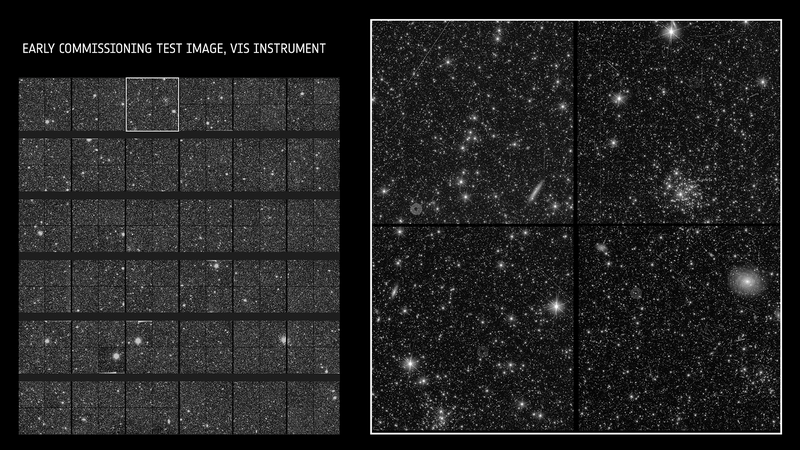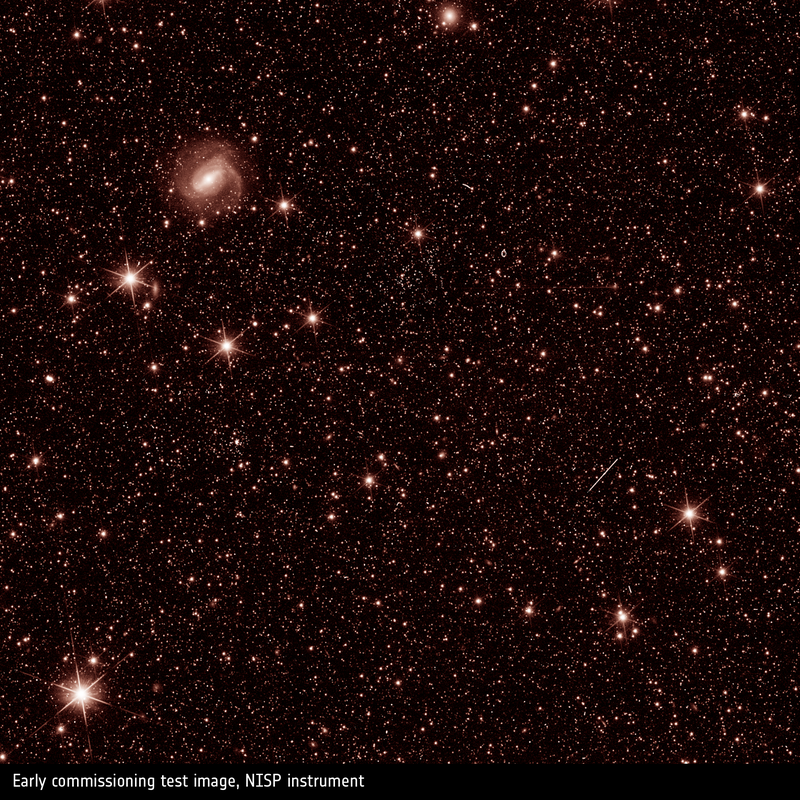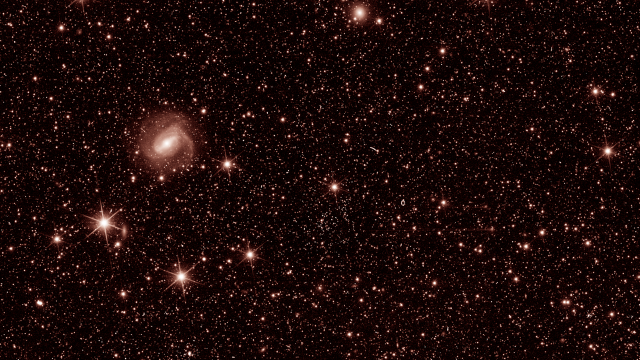The European Space Agency’s Euclid mission took over 11 years to get off the ground (and Earth), but now the nascent space observatory has produced its first test images of the cosmos.
Euclid launched on July 1 from Florida and is set to investigate the nature of dark matter and dark energy, which together make up 95% of the universe.
Euclid is equipped with two scientific instruments: a visible light camera (VIS) and a near-infrared camera and spectrometer (NISP). According to an ESA release, Euclid’s image quality will be at least four times sharper than those taken by ground-based sky surveys.

Euclid’s VIS instrument will take images of billions of galaxies; in an early commissioning test image produced by the instrument, countless light sources are seen in an area of the sky about a quarter the width and height of the full moon.
“I’m so proud of what the VIS team has achieved and grateful to all of those who have enabled this capability,” said Mark Cropper, an astronomer at University College London and who led the development of VIS, in the ESA release. “VIS images will be available for all to use, whether for scientific or other purposes. They will belong to everybody.”

When the instrument was first turned on, the Euclid team found an alarming light pattern contaminating the images. According to the same release, the team realized that sunlight was sneaking into the spacecraft. By imaging at different angles, the scientists found that the problem can be mitigated. The VIS images also include cosmic rays, seen as lines across the images. Science images from the telescopes will be artifact-free.
The NISP test images showcase how Euclid will determine the distance of galaxies and their distribution through the universe over time. These data can be used to create a 3D map of the universe, showing how the whole shebang evolved.
“We’ve seen simulated images, we’ve seen laboratory test images—it’s still hard for me to grasp these images are now the real universe,” said Knud Jahnke, a NISP instrument scientist, in the ESA release.
The images are reminiscent of the Webb Space Telescope’s test images, which were released in May 2022, several months after commissioning began and two months before the telescope’s scientific programming commenced. The infrared images are seen in orange, as the images have not gone through image processing to represent their cosmic scenes in representative colour.
The NISP image included above is only 4% of the instrument’s field of view; the image was produced from a 100-second exposure by the telescope. During regular operations, Euclid will collect light for about five times longer, indicating that the recent test image is just a small taste of the observatory’s capabilities.
In the same fashion as Webb’s timeline, Euclid’s first scientific images won’t come along for at least a few months, as the ESA team works to ensure that the telescope is performing optimally.
